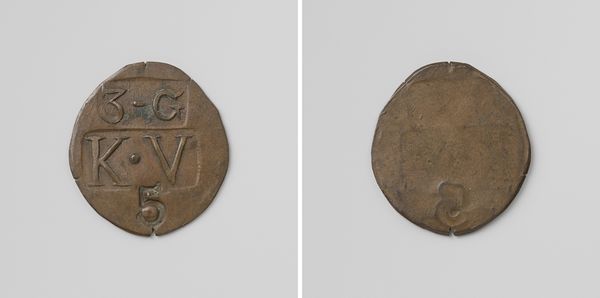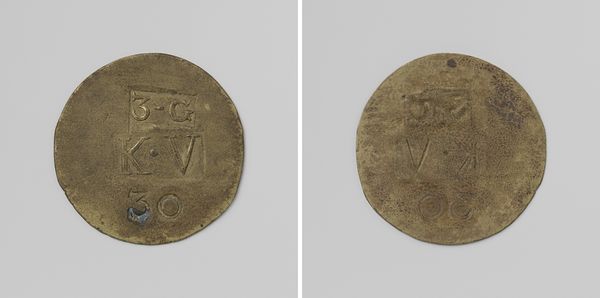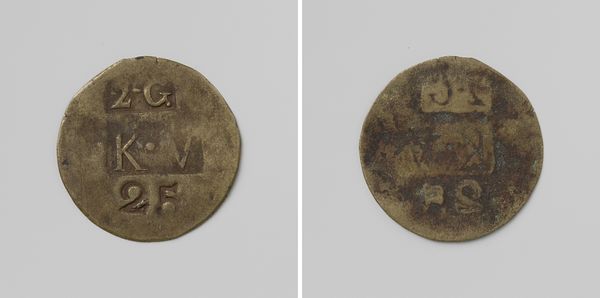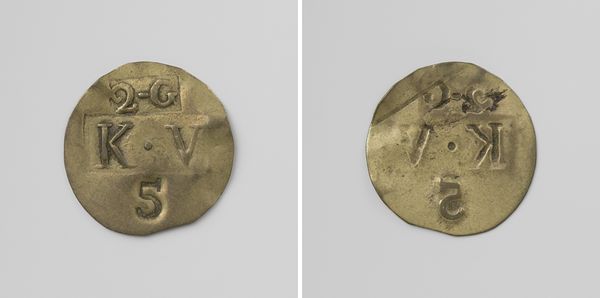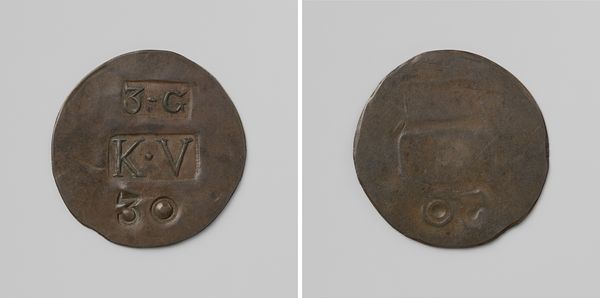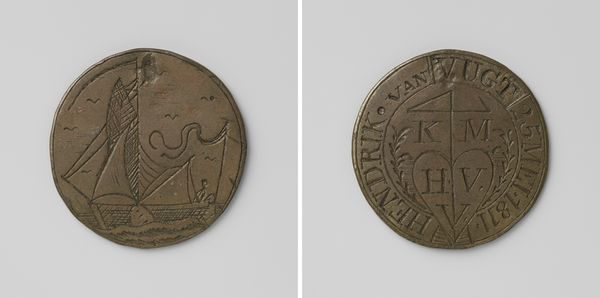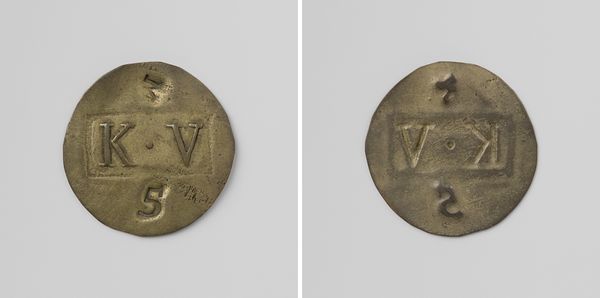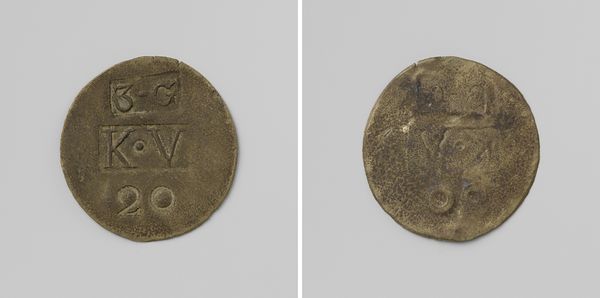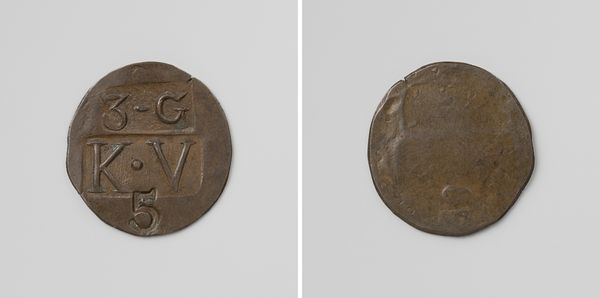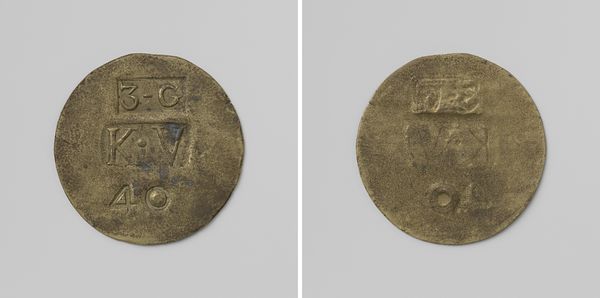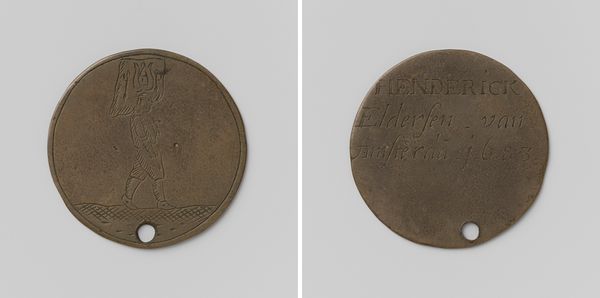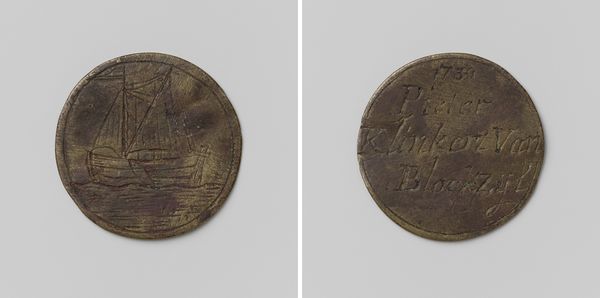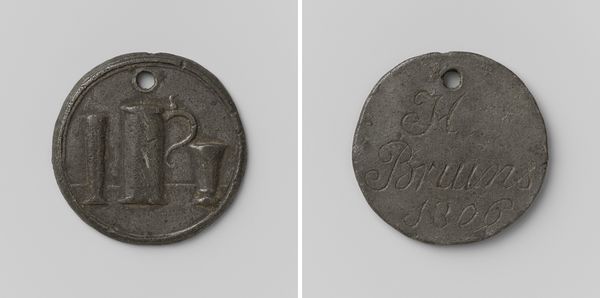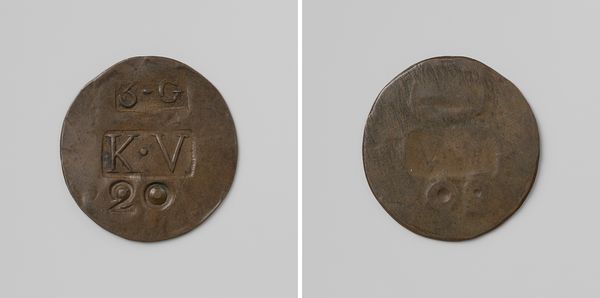
Metselaars-, steenhouwers-, leidekkers-, loodgieters- en pompenmakersgilde van Amsterdam, gildepenning van Magiel Batalien 1685
0:00
0:00
metal, relief, engraving
#
portrait
#
medieval
#
baroque
#
metal
#
relief
#
history-painting
#
engraving
Dimensions: diameter 4 cm, weight 16.90 gr
Copyright: Rijks Museum: Open Domain
Curator: This striking metalwork is a gildepenning, or guild badge, dating from 1685. It represents the Amsterdam guild of bricklayers, stonemasons, slaters, plumbers and pump makers, crafted by Magiel Batalien. Editor: It’s beautifully austere. Almost like an early infographic about labour, or perhaps a strange corporate logo, centuries before those existed. Curator: The imagery is rather symbolic. The crowned shape represents the water management system and the text represents its historical context within a professional order. It tells us how integral these trades were to Amsterdam’s infrastructure and status. Editor: Status, exactly! Guilds weren’t just about trades, were they? They were power structures, political entities… Seeing it like this, flat and engraved on metal, makes it feel so...concrete. The material speaks, literally, for its trade. Curator: Precisely! Guilds played a key role in shaping early modern society. Guild badges reinforced unity and protected shared interests, and their art reflected social standings within specific places and trades. This piece acts as both an art object and an archival tool. Editor: There's a tension, though, isn't there? A tension between its intended public role—advertising the guild, proclaiming its importance—and this almost secretive, encoded language it employs. I mean, unless you're already *in* the know, what does any of this *mean*? It could almost be read like an initiation token rather than public announcement! Curator: And you see how baroque and medieval styles influenced craft design during the time. Each object carries a blend of eras as culture changed slowly, it's pretty spectacular when you reflect on it. Editor: In that way, it mirrors Amsterdam itself. A place of pragmatic trade and booming social change, caught somewhere between its medieval past and a boldly mercantile future. That's what I find so engaging in this seemingly simple badge: how many stories are impressed onto it, demanding a translation and a closer inspection! Curator: Indeed. It reminds us that even the most functional of objects carries echoes of history and humanity within it.
Comments
No comments
Be the first to comment and join the conversation on the ultimate creative platform.
